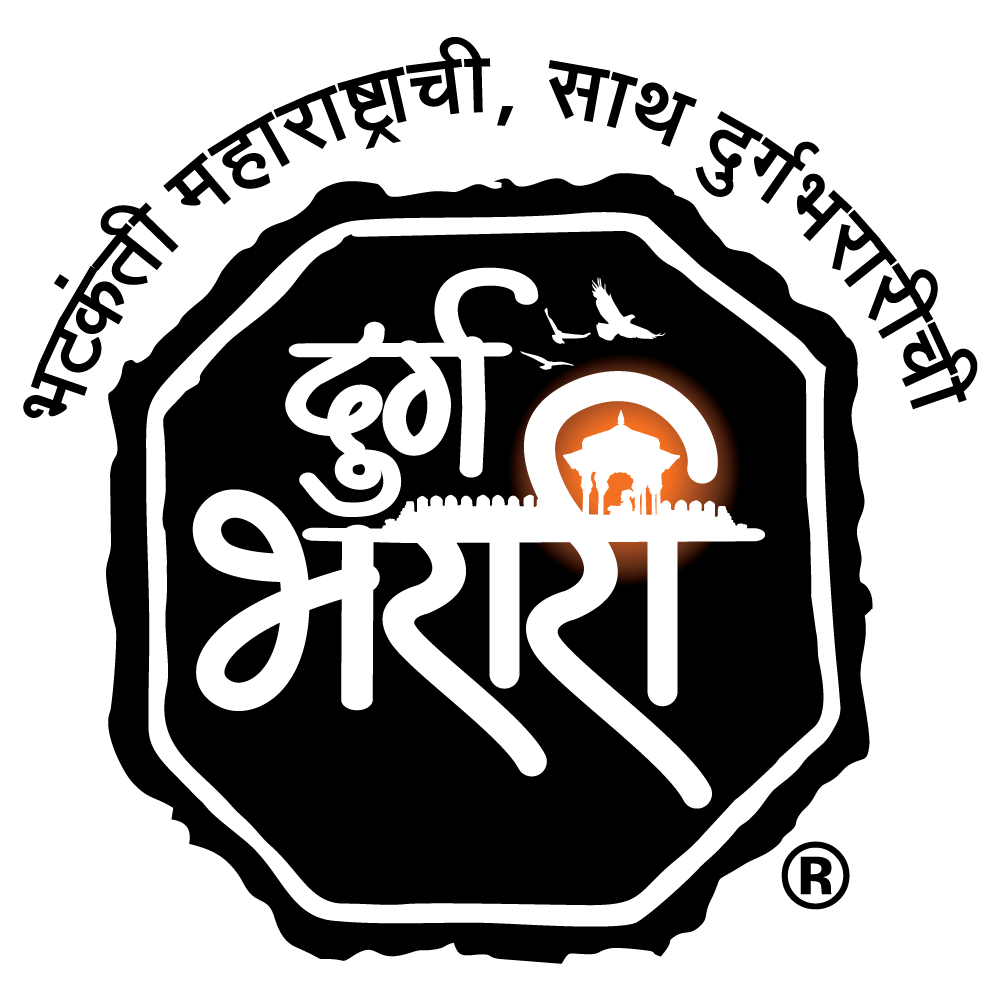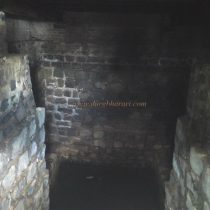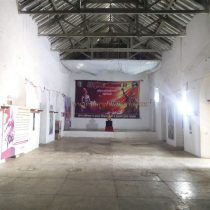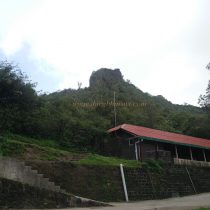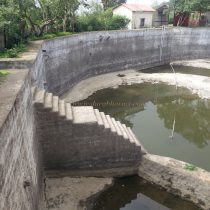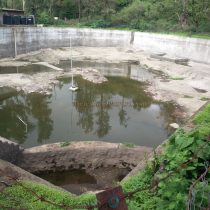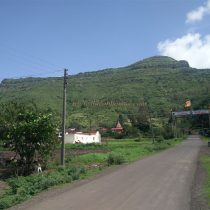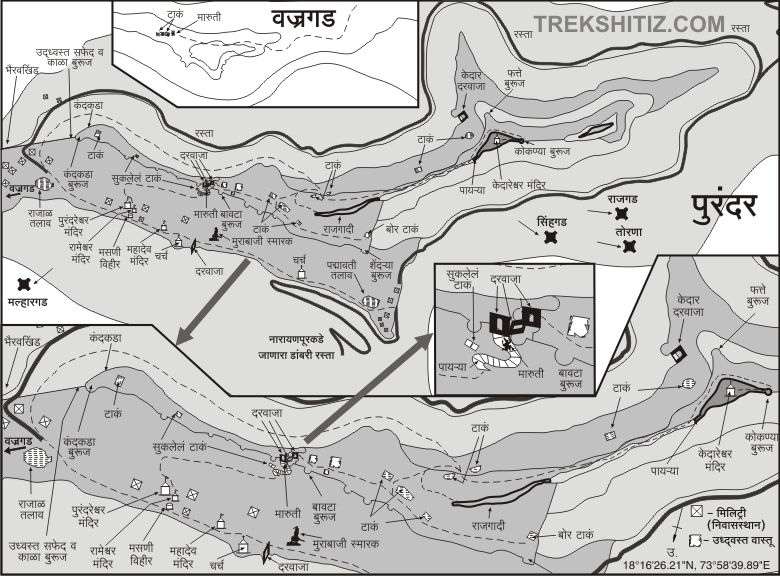PURANDAR
TYPE : HILL FORT
DISTRICT : PUNE
HEIGHT : 4395 FEET
GRADE : EASY
Fort’s participation in the establishment of Swarajya during Shivaji Maharaj’s period was very important. Each fort has played a different role in this. Fort Purandar is another important fort in the range forts of Raigad, Rajgad, Torna, and Lohgad. Purandar fort is famous due to its treaty. Its taluka location is Saswad. At present Purandar and its adjoining Vajragad fort is under the control of the Indian Army and for security reasons, Purandar fort can be seen only from 9 am to 5 pm. Access to the Vajragad fort is strictly forbidden. To enter the fort, one must have an identity card with a photograph of the State or Government of India. Although it is allowed to see the Purandar fort, the fort's moat, Kedar Darwaza and Bawchi Machi have been cordoned off for security reasons. Also, access to Bhairavkhind and Vajragad areas is completely restricted. It is strictly forbidden to take photographs on the citadel and it is strictly forbidden to take your mobile / camera there.
...
We should keep in mind that we are in the vicinity of the army and rules should not be broken. Narayanpur is a village at the foot of the fort and the road from the village goes directly to the fort. The footpaths leading from the village to the fort gate are of no use as the gate is completely wired with the fence. So you have to walk to the newly built Murargate. This is the only way to enter the fort. Purandar Fort is at a distance of 45 km from Pune and you can go directly to Purandar fort by private car. Otherwise, there is a bus service from Pune to Narayanpur and it takes one and a half hours to reach the Machi of the fort by car from Narayanpur village. You can enter the fort only after checking your vehicle at Murargate. As the fort is only an hour away from Pune and the car comes directly to the fort, the fort is very crowded with tourists on holidays. The fort has good drinking water facilities and a restaurant for meals. Purandar Fort is divided into two parts namely, Machi and the citadel. The Machi is divided into three parts namely Machi Purandar, Mahankal, and Bavchi. The citadel is also divided into three parts namely Khandakada, Rajgadi, and Kedareshwar. Of these, only Purandar Machi is accessible and both Mahakal and Bavchi Machi in the south are restricted areas. As Murargate enters the Purandar Machi of the fort, the armored bastion at the top of the hill is the Shendarya Buruj. This is where your fort round begins. On the right-hand side of the road is Padmavati Lake and on the right-hand side, you can see a church built during the British period. Next to it, on the left side of the road, there is a rampart with a circular bastion. In the next fork on the road, there is a statue of Murarbaji Deshpande holding swords in both hands and behind it is his Samadhi temple. A little further along the road, on the left, towards the north side, you can see the north-facing door. The entrance to the fort is blocked by a wire fence on the outside of the gate. Built on the base of the bastion, the gate has a guard’s porch and a small temple on the inner ramparts. Stairs are built to go up to the top of the door. This door is known as Sir Darwaza or Bini Darwaza. After looking at the door, you can see another church on the left side of the road. A short walk from the church leads to the temple of Lord Shiva on the right. After visiting the temple, you will see a square-shaped enclosed well on the right side of the road. This well is known as Masani well. When you come forward from here, you can see a paved footpath on the right side of the road in the direction you came from. After passing this path, we reach near Purandareshwar temple. There is a wall around the temple and the temple is divided into two parts, the prayer hall, and the sanctum sanctorum. There is a Nandi outside the temple and there is also a Shivling here and a 1.5 feet high idol of Indra. It is mentioned that this temple was renovated by the great Bajirao Peshwa. At the back of the temple is the private Rameshwar temple of the Peshwa family. Your tea and breakfast are well served in the restaurant near the temple. Going a little above this temple, you can see the remains of a two-storied mansion built by Balaji Vishwanath at the beginning of the Peshwai period. Sawai Madhavrao was born in this mansion. A well can be seen at the back of the mansion. After seeing the mansion, come back to the main road. Continuing along the road, you can see the largest lake on the fort called Rajale Lake. The water flowing from the hill slope of the citadel is discharged into the lake through a stone drain but to prevent soil from being discharged into the lake, it is first discharged into a cistern and then when the soil settles down, the pure water from the top is discharged into the lake. This lake is still in use today. After coming straight from the lake, we reach Bhairavkhind where a bust of Chhatrapati Shivaji Maharaj is installed. The hill on the east side of this gorge is the Vajragad fort. The next part of Bhairavkhind is closed. So far what we saw is Purandar Machi, Murargate, and Bhairavkhind. From here, the next Mahankal extends from Machi Bhairavkhind to Kedar Darwaza and the Bachi extends from Kedar Darwaza to Fateh Buruj. From here, turn back and come to the parking lot near Purandeshwar Temple. There is a road leading to the citadel in front of this parking lot. Since photography is prohibited in the next area from here, keep your mobile-camera in the car or deposit it at the security check post here. In 15 minutes, we reach the steps under the gate of the fort. On the left side of this path is a square-shaped dry water cistern and on the left side is the idol of Hanuman in the temple. Looking at the carvings and mustaches of this idol, this idol must be from the Peshwa period. Climb the steps and reach the north-facing gate of the fort built between two bastions. In this part of the fort, there is a series of three gates built at right angles. The first door is known as Delhi Darwaza, the second door is known as Ganesh Darwaza and the third door is known as Nishan Darwaza. When you enter through the first door, you can see a path on the left side. This is the road leading to Khandakada although it is now closed. If you climb the bastion on the right side, you can see the part up to the end of the Khandakada. There are two water cisterns near this bastion and one on the way. The bastion at the end of the bridge is built to keep an eye on Bhairavkhind and Vajragad. It is mentioned that there is a secret door to descend on the Khandakada. From here there is another Ganesha Darwaza and on the left side of the door, there is a worn Ganesha idol in the corner. Upon entering the citadel through the next north-facing Nishan Darwaza, one sees the place of the flagpole on the bastion on the right. This bastion is called Nishan Buruj. Going further from here, you can see two ruined structures on the left and the right side of the road. From here we come to a cistern on the way. From here you can see Rajgadi hill. Two paths can be seen near these cisterns. The path on the right leads to Shendarya Buruj while the path on left leads to the Kedareshwar temple. There are two water cisterns on the left side of the road leading to Shendarya Buruj. The Shendarya Buruj and its lower part are enclosed by a double rampart, from where the entire area of Murargate and Padmavati Lake on Purandar Machi can be seen. From this bastion, there is a short path to descend to the lower ramparts. The story of Nathanak and Devkai's sacrifice is told in this Shendarya Buruj. In front of this bastion, there is a water cistern. From here you can see the Kedareshwar temple on the opposite hill. After seeing the Shendarya Buruj, turn back and start your next fort round on the left side of the cistern on the main road. After going a little further along this road, there is a fork on the right side and this road leads to the pinnacle of Rajgadi. You must first ascend the path to the right in front of the hill. There is a quadrangle structure of a building here and a little further on there is a broken building in which ammunition used to be kept. After climbing a little, we come to the top of Rajgadi hill. This hill must have got its name Rajgadi as it is the mansion of Chhatrapati. The ramparts on the right side of the hill are still in good condition and a restroom is constructed in this rampart. After seeing the hill of Rajgadi, go down the road and keep the hill of Rajgadi on the right side and go towards Kedareshwar temple. On this road, there are quadrangle structures of some buildings and next to it there are two water cisterns. One of these cisterns is called ‘Mhasoba Take’. Walking straight from these cisterns, one more water cistern is seen. A fence has been erected on the front side of the cistern and the descending path has been enclosed. But from here there is a beautiful view of the Kedar Gate with two bastions and the ramparts around it. The Bawchi machi can be seen on the lower side of the Kedar door although its use has been stopped due to construction of the door. This door, which was important during Shivaji Maharaj’s time, has now gone into obscurity. On the upper side of the gate is the Mukhi / Mukarshi lake built by the great Madhavrao Peshwa and on its right side is the Fateh Buruj on the trunk of the citadel. Visit the Kedar Darwaza and come to the main path from the cistern. About 15 minutes walk from here we come to the gorge between Rajgadi Hill and Kedareshwar Temple Hill. To reach the Kedareshwar temple from here, a 70-step staircase is built out of wrought stone. This staircase leads us to the east-facing temple of Kedareshwar. The temple area is very small and is paved with carved stones. The division of the temple is done into two parts, sanctum sanctorum, and the prayer hall. There is a Nandi in front of the temple and next to it there is a stone Deepmal and a quadrangle structure and at some distance, there is a Samadhi. The temple of Kedareshwar is on the highest peak of the fort and the height of the fort is 4482 feet above sea level. The bastion at the back of Kedar Hill is known as the Konkanya Buruj and the bastion on the right is known as the Hatti Buruj. From here you can see Rajgad, Torna, Sinhagad, Rayareshwar, Rohida, and Malhargad forts and the whole area of Karhapathar. It takes a day to walk around and see the entire fort. Purandar is a fort that is described in history as 'Allyad Jejuri, Palyad Sonori, Karhe Purandar Shobhato Shivshahicha Tura' Purandar fort is directly connected with Puran. According to a Puran story, Indranil Parvat is the mountain on which Indra did Tapasya order to get rid of the curse of sage Gautam. Purandar means Indra and his weapon is Vajra therefore the fort built in front of Purandar was named Vajragad. Looking at the ancient Kedareshwar temple at Narayanpur village at the base of the fort, the fort must have been built during the Chalukya or Rashtrakuta period before the Yadav period. After the fall of the Yadav Empire, during the reign of Bahmani Sultan Alauddin Hasan Gangu, in 1350, Chandrasampat Deshpande of Bedar captured Purandar fort and rebuilt it. In 1384, during the reign of Mahmud Shah Bahmani, the construction of the Shendarya Buruj was in progress. When the Bahamani rule came to an end, the fort was captured by Malik Ahmad in 1486, it remained under Nizam rule for many years. In 1629, the fort came under the control of Adilshahi. After the capture of the fort by Shivaji Raja, in 1649, Adilshah sent Fateh Khan to deal with Shivaji Maharaj. Shivaji Maharaj chose the Purandar fort for battle but the fort was not in the possession of the Marathas. After the death of Mahadji Nilkanth, the fort keeper of Purandar, his children fought between themselves for the throne, Shivaji Maharaj took advantage of this situation and succeeded in entering and bringing the fort under his control. With the help of the Purandar fort, the Marathas fought against Fateh Khan and defeated him at Belsar. The initial administration of Swarajya started from this fort till the construction of Rajgad fort was completed. In 1655, Shivaji Maharaj appointed Netaji Palkar as the head of the fort. Sambhaji Raja was born on Thursday, May 16, 1657, on Purandar fort. On 30th March 1665, Dillerkhan laid siege to Purandar fort, and 15 days later on 14th April 1665, Vajragad was captured. After this, Dillerkhan attacked Purandar and captured Purandar’s Machi. Murarbaji Deshpande became a martyr in the fierce battle. On 13th June 1665, at the foot of Purandar, Maharaj handed over Purandar and 22 other forts to the Mughals. March 8, 1670, Nilopant Mujumdar recaptured the fort. After the death of Sambhaji Maharaj, in 1689, Aurangzeb conquered Purandar and renamed it Azamgarh. In 1705, Shankaraji Narayan conquered the fort from the Mughals on behalf of Maharani Tarabai. In 1707, Chhatrapati Shahu Maharaj lived on the fort for some time. In 1713, the Purandar fort was handed over to the Peshwas and Balaji Vishwanath's family settled on this fort. In the year 1727, Chimaji Appa started the Maratha coin mint on the fort. Sawai Madhavrao was born on 18th April 1774 at Purandar. The Anglo-Maratha Pact of 1776 is known as the Second Purandar Pact. On 16th March 1818, the British captured the fort and set up a military base there. In 1961, the Government of India appointed V. K. Krishna Menon to start a military training academy at the fort. On 19th April 1970, a statue of Murarbaji Deshpande was erected on the fort. The most important event in the history of the Purandar fort is the battle fought by Murarbaji Deshpande against Dillerkhan with a select group of 700 Mavals and the heroic death that befell them. This fight is described excitingly by Sabhasad Bakhar. Describing the war, the Sabhasad Bakhar says - There were a thousand soldiers with Dillerkhan. Apart from this, there were two thousand soldiers in the fort. Murarbaji selected seven hundred soldiers and came to fight with Dillerkhan under the fort. Dillerkhan and his army of five thousand soldiers with bullocks were attacking the fort climbing and attacking the fort from all sides. A great war broke out. The Mavalas and Khansa Murarbaji fought each other. Five hundred Pathan soldiers were killed. 'Seeing this bravery of Murarbaji Deshpande, Dilerkhan said, ‘Come on our site you will get a good post' Murarbaji Deshpande said, ‘I am Shivaji Maharaj’s soldier, why will I come to your side?’. Then Khan finished him by shooting him with three of his arrows. He fell and then Khan said in astonishment, ‘This soldier was created by God’. Murarbaji, who made 5,000 troops of Dillerkhan run away in fear with only 700 Mavals, died a hero in the battle on 16 May 1665.
© Suresh Nimbalkar
